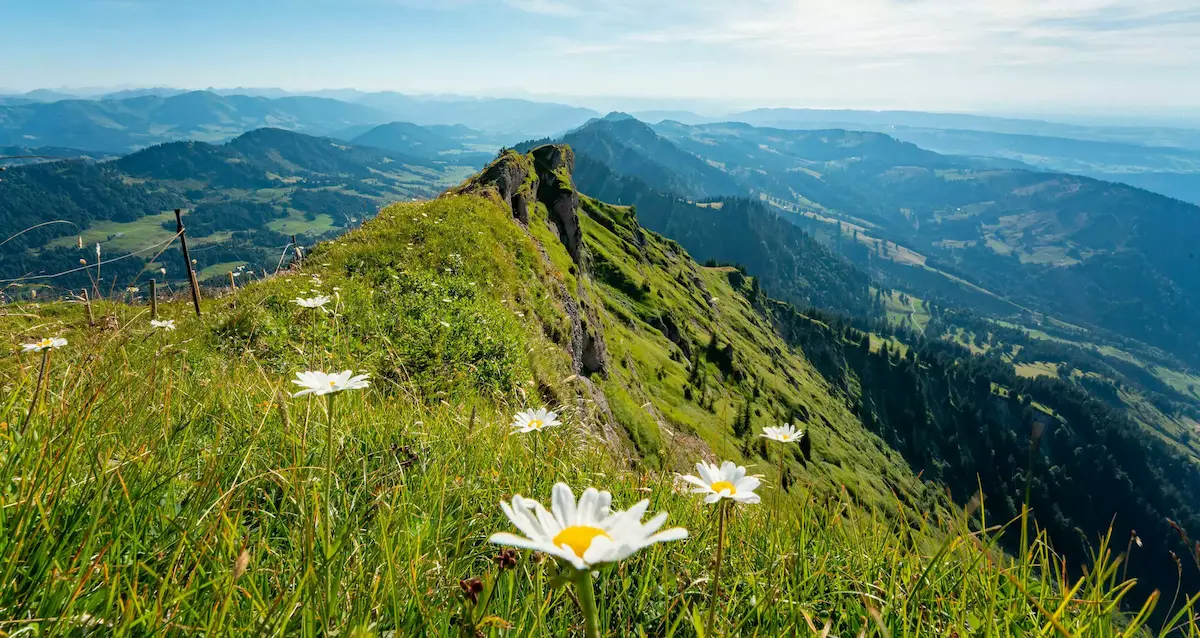Moors, forests, mountains - nature in the Allgäu has so much to offer. This is precisely where an initiative by the Oberstaufen tourism association comes in, with the aim of bringing people closer to nature in all its beauty, but also in all its vulnerability. Because he who understands does not outrage. Accompanied by experienced rangers, nature park guides and forestry experts, holidaymakers can go on a discovery tour and enjoy exciting experiences. The year-round nature experience programme offers a unique triad of enjoyment, fun and information.
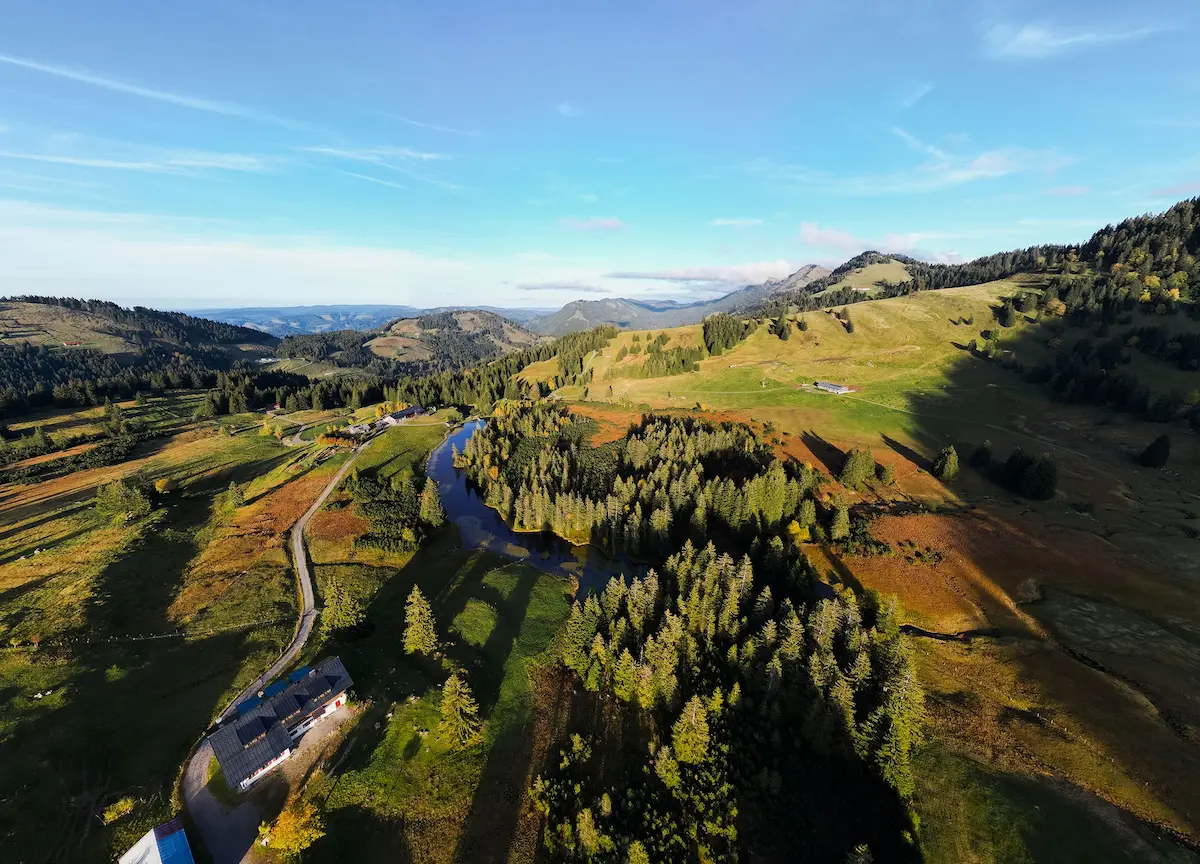
Understanding bogs
Peatlands are currently ‘in fashion’, and rightly so, as they are the most efficient CO2 reservoir on land. In recent centuries, the water has literally been turned off the storage and - importantly - habitat of moors, i.e. they have been drained wherever they promised an economic yield as agricultural land. Only a few areas of relevant moorland remain in their natural state, such as the Hörmoos on the Imberg. Here, the nature park and certified hiking guide Laura Dresse introduces holidaymakers to the function and ecology of the moors with interesting riddles and stories as part of her ‘Moor Stories’. How fast does a moor grow? What animals live there? Why does it store so much CO2? What is it good for? Didactically, Laura Dresse follows the path of arousing curiosity and capturing attention through a combination of experience and knowledge acquisition in order to achieve lasting understanding and affection for this very special biotope. "Where appropriate, I incorporate stops and suitable elements. On the guided tour through the moor, for example, I show how peat is structured and how the moss stores water."
Today, the maintenance and renaturalisation of moors is an absolute necessity, as is the planting of trees. The renaturalisation of moors is one of the fastest-acting climate protection measures. However, this is not always met with unanimous understanding, which is why raising awareness among large sections of the population, as practised in Oberstaufen, is of eminent importance.
Laura's tours also include ‘Experience natural wonders’, ‘On the trail of ancient trees’ and ‘Water magic in the Allgäu Alps’, which includes a look under water. To see which animals find a habitat here. Not only fish, but also insect larvae, crabs, amphibians and much more.
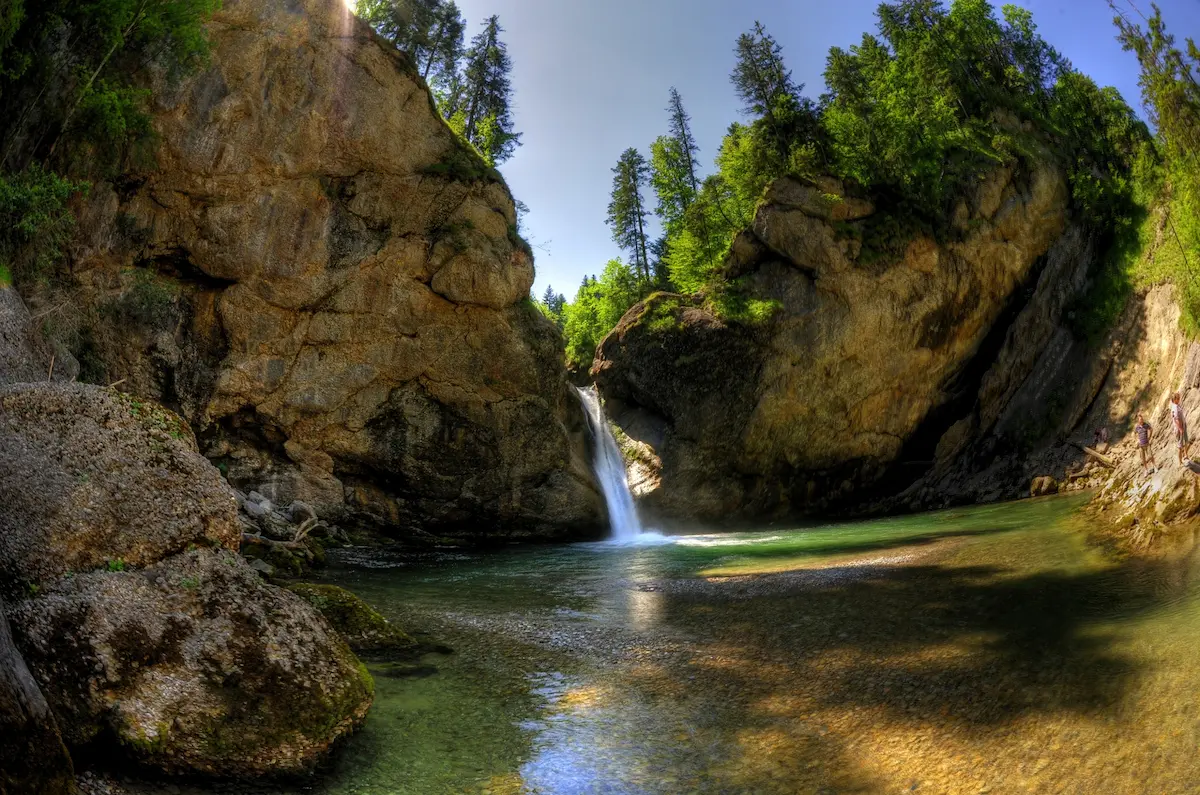
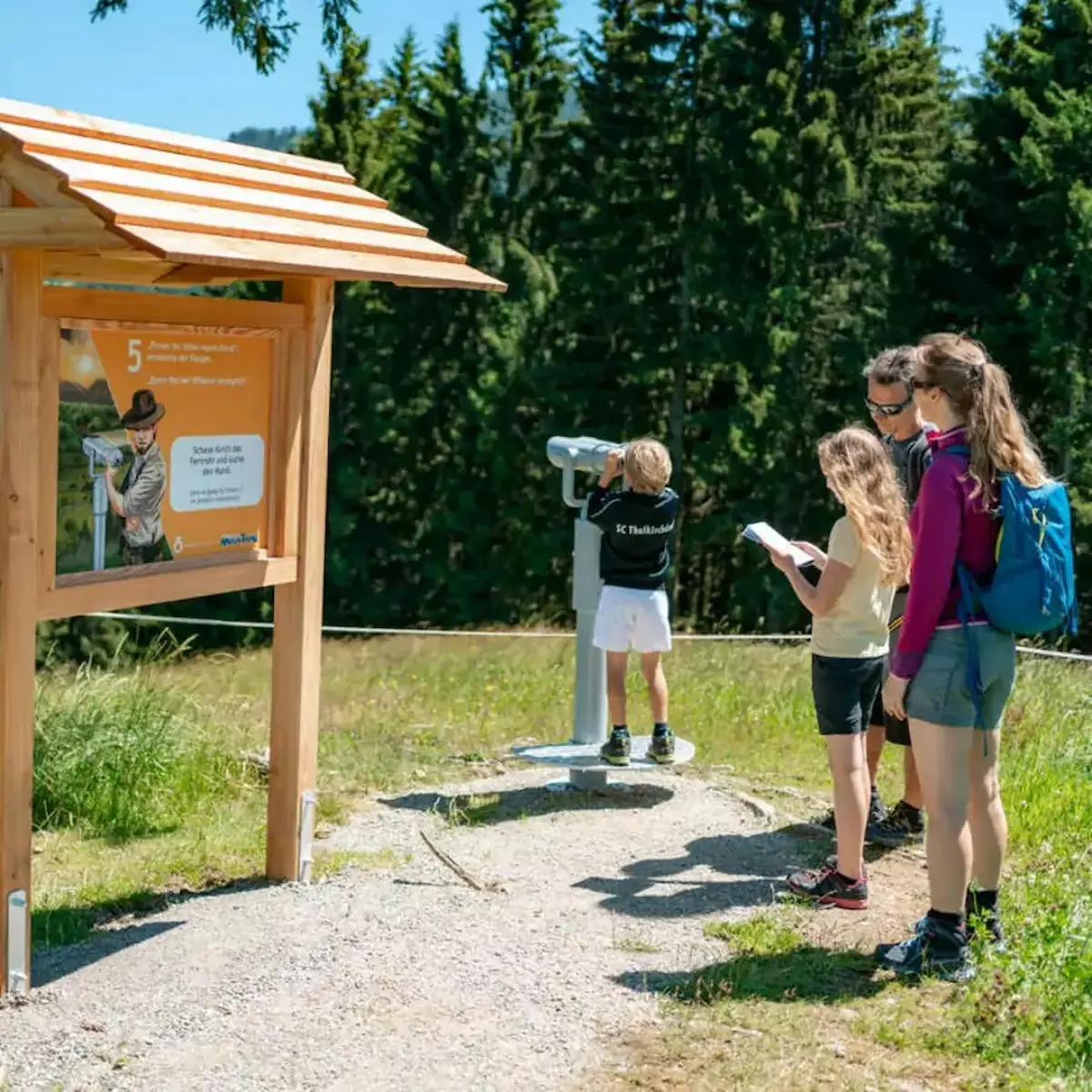
Understanding in the forest
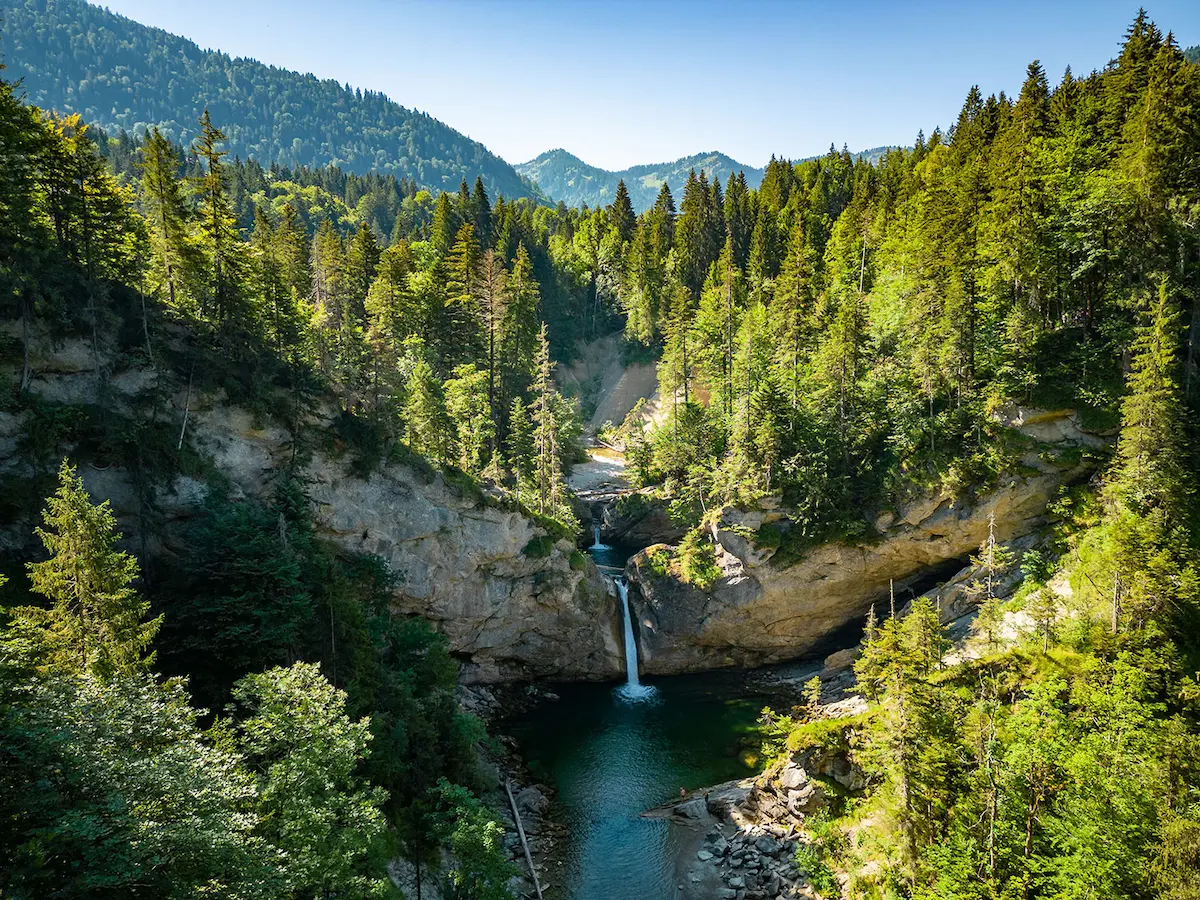
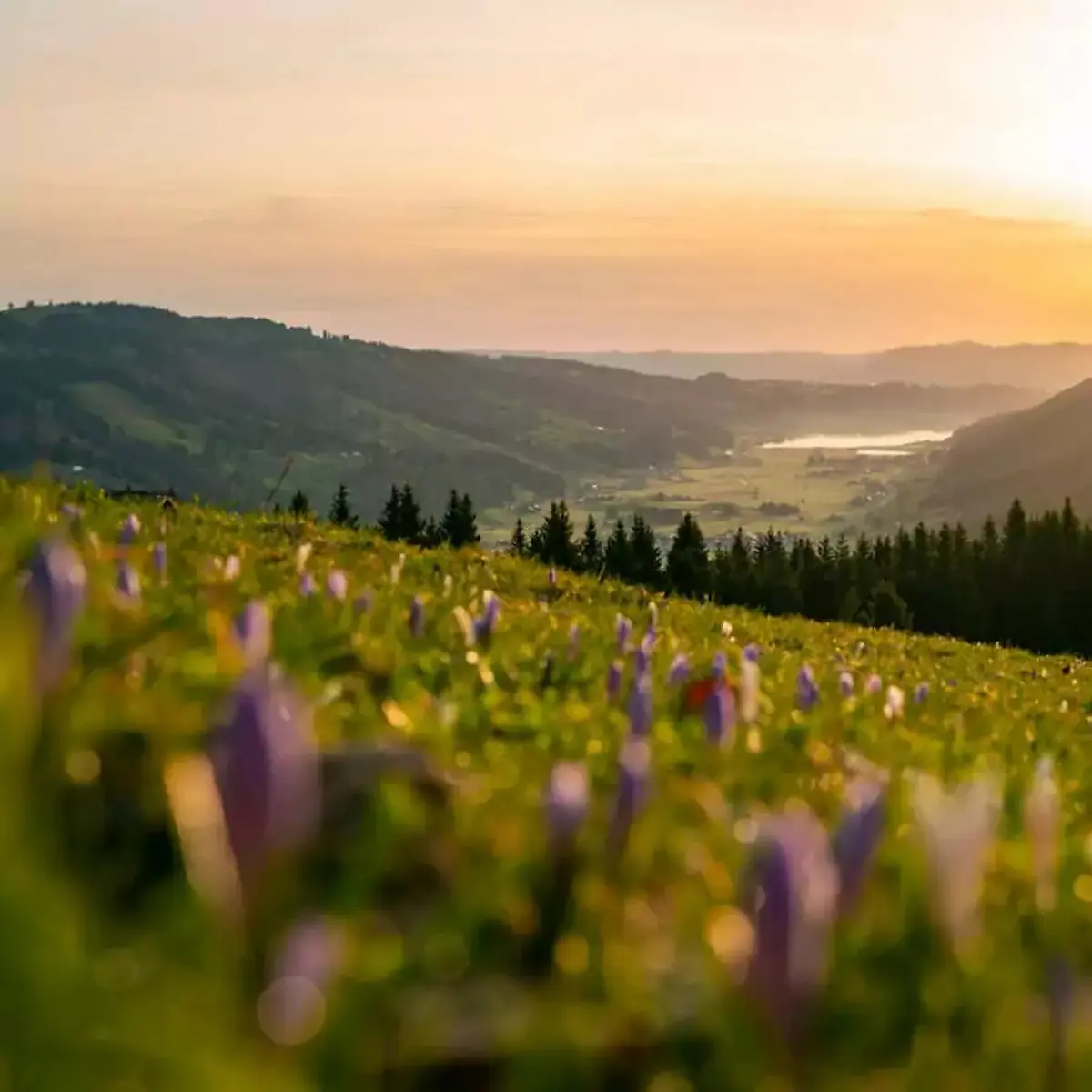
Like the moor, the forest is also an important carbon store, especially the mountain forest, which, in contrast to harvest-optimised spruce monocultures in the lowlands, is characterised by the fact that a wide variety of tree species, deciduous and coniferous trees as well as shrubs occur here and the stand is also colourfully mixed in terms of age. The record holder in terms of age and Methuselah here is an ancient yew tree. At 600 to 800 years old, this inconspicuous, hollow tree is one of the oldest trees in Germany. This mixed forest forms a complex community of large plants, animals, mosses, ferns and fungi that produces large amounts of oxygen, stores water, cools the air and protects against erosion and avalanches.
How exactly does this work? On organised hikes, forest experts and nature park rangers provide an introduction to the systemic relationships that are as important as they are endangered. Why are clearings in the forest so important? How do trees communicate with each other? What role does deadwood play for microorganisms? And why does the soul blossom in the forest and why does blood pressure drop? Those who go on the two-hour excursions with the forestry experts will enjoy the local forests and learn lots of interesting facts about them.
Alpine pastures and meadows
The mosaic would not be complete without the extensively farmed mountain pastures, which are called Alps in the Allgäu, and numerous flower and herb meadows. They are also diverse habitats with complex relationships between their inhabitants. Guided herb and medicinal plant hikes as well as hands-on activities for holidaymakers, such as tree planting campaigns and rubbish clean-up initiatives, actively bring holidaymakers closer to nature.
The new year-round nature experience programme in Oberstaufen answers all questions about nature, its interrelationships and its protection. Both the idyllic aspects and the current challenges posed by climate change, pollution and the overuse of natural resources are covered in detail and in an entertaining way. Among the numerous offers, many are explicitly aimed at families with children.
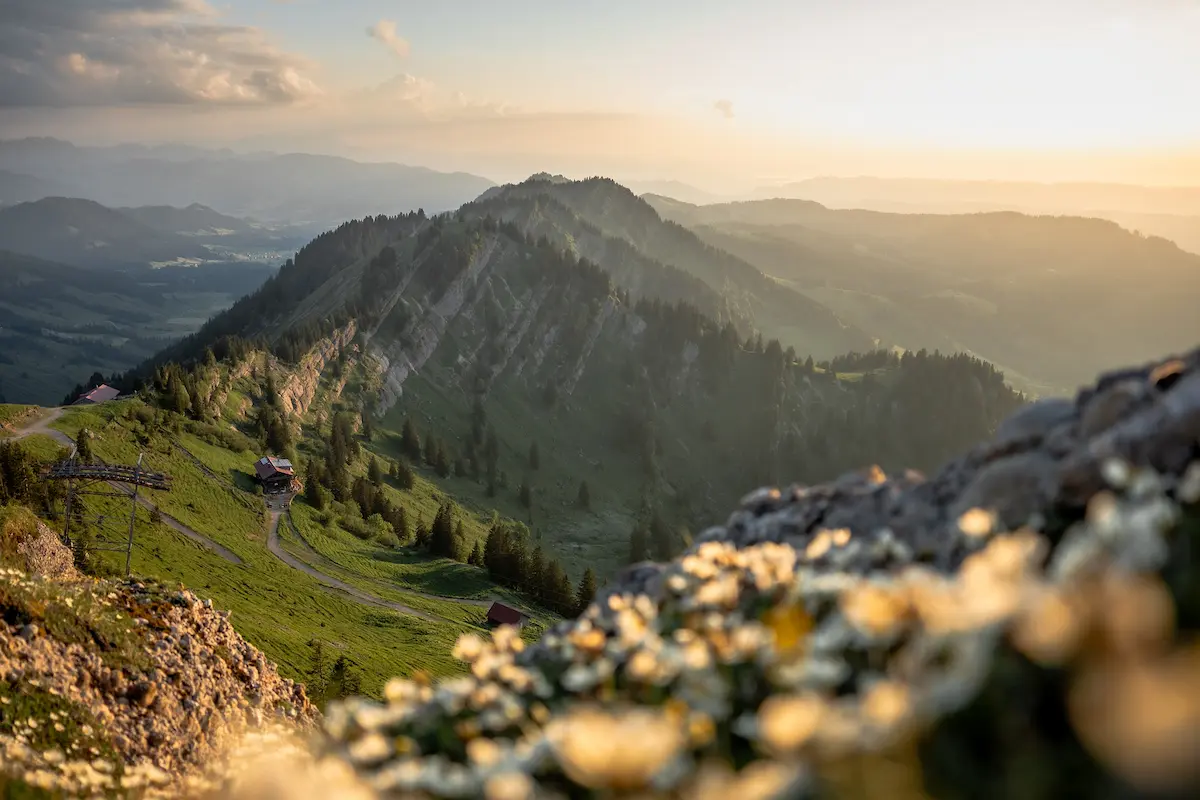
Nagelfluhkette Nature Park
The Nagelfluhkette Nature Park with its varied structures is a place to experience and recognise. Nagelfluh refers to a geologically relatively young conglomerate rock that is found in former maritime shallow water zones and is widespread on the northern edge of the Alps. ‘Fluh’ is the Swiss term for steep cliffs, which can often be seen in the chains.
The nature park, which stretches from the Oberallgäu to Vorarlberg, always following the mountain range that gives it its name, is a landscape mosaic of mountain forests, alpine meadows, moors, rocks, rivers, gorges and mountains. It stretches over 405 square kilometres from the foothills to the high alpine landscapes in Vorarlberg. It owes its name to the 24 kilometre long mountain range. The nature park, which mainly consists of landscape conservation areas and nature reserves, has a high level of biodiversity and is a habitat for rare animal and plant species. The large nature reserve stands for sustainable tourism and environmentally friendly land use. Oberstaufen is the largest member municipality in the Nagelfluhkette Nature Park and its tourist centre.
www.oberstaufen.de/naturerlebnis
Text: Werner Köstle/ Oberstaufen Tourismus Marketing
Pictures:
Oberstaufen Tourismus Marketing, Oberstaufen Tourismus Marketing /Leo Schindzielorz/Nico Bogenreuther/

